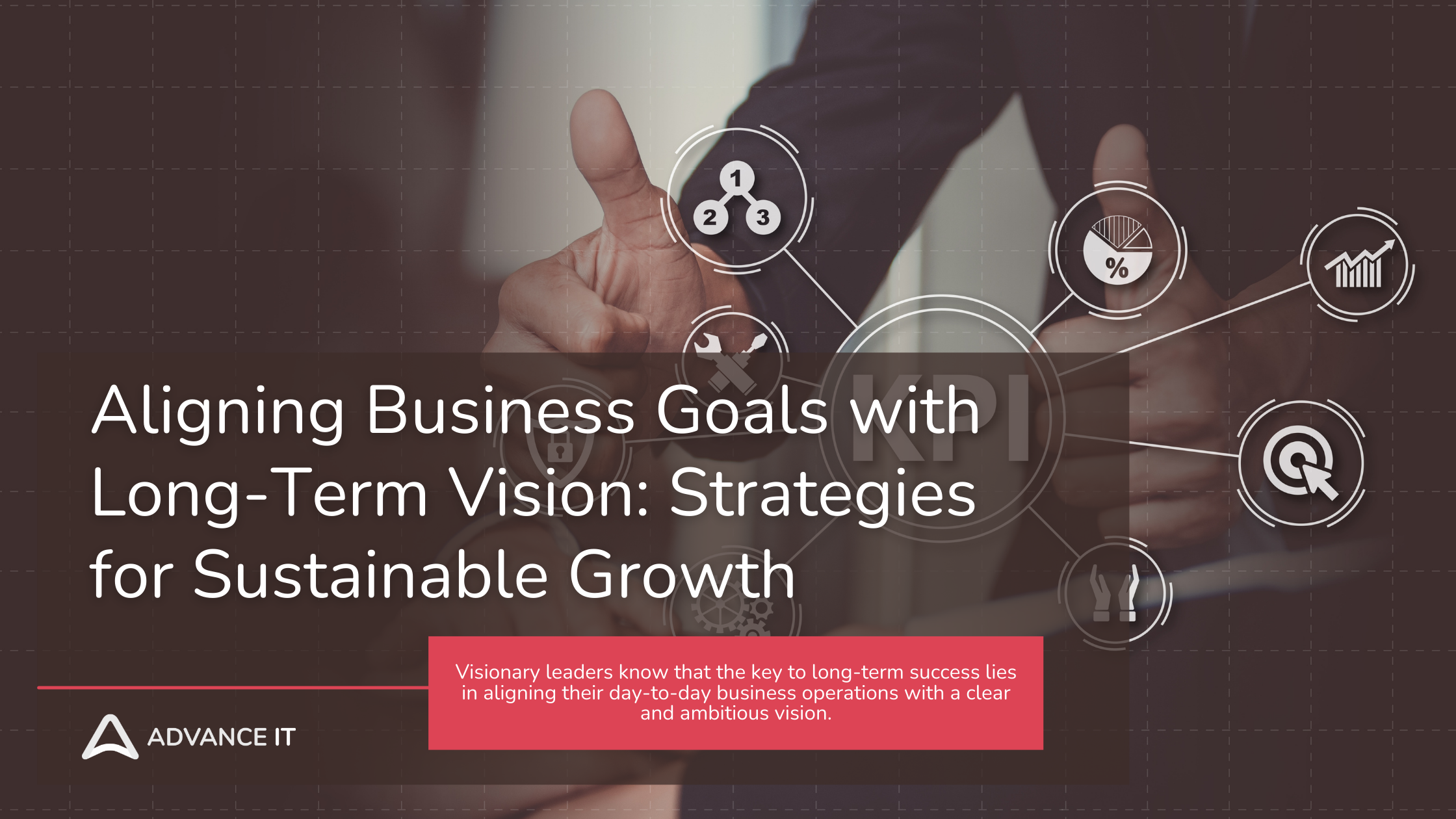Aligning Business Goals with Long-Term Vision: Strategies for Sustainable Growth
Visionary leaders know that the key to long-term success lies in aligning their day-to-day business operations with a clear and ambitious vision. Without this alignment, even the best strategic plans can become disjointed, leading to wasted resources and missed opportunities.
Why Alignment Between Goals and Vision Is Essential
Aligning business goals with your long-term vision is critical to sustainable growth. According to research by Harvard Business Review, companies with a well-defined vision and aligned strategic goals are 70% more likely to outperform their competitors. This alignment ensures that every department and individual effort is directed toward a unified purpose, boosting efficiency and fostering innovation.
Common Challenges in Achieving Goal-Vision Alignment
Business leaders often face the following hurdles:
Operational Disconnect: Daily activities and short-term objectives don't always reflect the company's long-term vision.
Inconsistent Communication: A lack of clear communication about the vision can lead to misaligned team efforts.
Technology Gaps: Outdated systems can prevent seamless execution and tracking of aligned goals.
Strategies to Align Business Goals with Long-Term Vision
1. Define Clear, Actionable Goals with SMART Criteria
Setting SMART (Specific, Measurable, Achievable, Relevant, Time-bound) goals is the foundation for aligning your business objectives with your long-term vision. These criteria ensure that your goals are not only well-defined but also directly contribute to your overarching purpose.
How to Create SMART Goals:
Specific: Define clear objectives that align with the vision.
Measurable: Establish key performance indicators (KPIs) to track progress.
Achievable: Set realistic targets that push your team but are attainable.
Relevant: Ensure each goal ties back to the core vision of the company.
Time-bound: Set a timeline to measure progress and achieve milestones.
Benefit: SMART goals provide a structured approach that aligns every strategic effort with your long-term aspirations.
2. Implement Scalable IT Solutions for Seamless Execution
Leveraging technology is crucial in bridging the gap between vision and execution. Investing in scalable IT infrastructure allows your company to support growth initiatives efficiently and ensures that operations remain aligned with long-term objectives.
Technological Enhancements for Goal Alignment:
Project Management Tools: Use tools like Asana or Trello to track progress on strategic initiatives and ensure all teams are aligned.
Data Analytics Platforms: Implement analytics to gather insights on how well daily activities are contributing to larger business goals.
Managed IT Services: Partner with IT support services that offer proactive monitoring and system optimization to maintain efficiency.
Benefit: Scalable IT solutions empower your teams to work in sync, using data-driven insights to adjust strategies in real-time, keeping the focus on your long-term vision.
3. Communicate the Vision Across All Levels
Clear and consistent communication is the backbone of aligning your business goals with the company’s vision. Every team member should understand how their daily tasks contribute to the bigger picture.
Communication Strategies for Vision Alignment:
Regular Vision Briefings: Hold quarterly or bi-annual meetings to revisit the company’s vision and update teams on progress toward long-term goals.
Incorporate Vision into Training: Include your vision in the onboarding process to ensure that new employees align with the company’s purpose from the start.
Leadership Alignment: Ensure that executives and team leaders continuously reinforce the vision in their daily interactions.
Benefit: Clear communication channels help instill a shared purpose among team members, which drives motivation and cohesive efforts toward common goals.
4. Create a Flexible Strategic Plan
The business landscape is constantly evolving, which means your strategic plan should be flexible enough to adapt to changes while remaining aligned with your long-term vision. Agile planning allows your business to pivot when necessary without losing sight of your overall objectives.
Agile Strategic Planning Tips:
Set Milestones: Break down your long-term vision into smaller, actionable steps that are easier to manage and measure.
Regular Reviews: Evaluate progress at each milestone and be prepared to adjust strategies based on new data or market conditions.
Feedback Loops: Incorporate feedback from stakeholders, employees, and customers to refine your strategic direction.
Benefit: A flexible strategic plan ensures that your business remains adaptable to market shifts while staying firmly rooted in your long-term goals.
5. Measure Success with Relevant KPIs
Tracking progress using key performance indicators (KPIs) ensures that your efforts are aligned with your long-term vision. These metrics provide valuable insights into whether your daily activities and short-term objectives are pushing the company toward its ultimate goals.
Key KPIs to Monitor:
Revenue Growth: Tracks how well your sales strategies align with financial goals.
Customer Satisfaction: Measures whether your products and services are meeting customer needs in line with your vision.
Operational Efficiency: Assesses the productivity of your teams and how effectively they execute strategic initiatives.
Benefit: Regularly analyzing KPIs helps identify gaps and areas for improvement, ensuring that your strategies are always on track to achieve the company's vision.
Leveraging IT Support for Vision Alignment
Managed IT services can play a crucial role in aligning your business goals with long-term vision. IT support helps streamline operations, secure data, and optimize system performance, which is essential for executing strategic plans effectively. By integrating advanced technology solutions, your company can focus more on innovation and long-term growth while minimizing operational disruptions.
Advantages of IT Support Services:
Proactive System Monitoring: Detects and resolves issues before they impact your business operations.
Data-Driven Decision Making: Provides actionable insights through analytics, aligning your strategies with your vision.
Scalability: Ensures that your technology infrastructure grows alongside your business needs.
Final Thoughts
Aligning your business goals with your long-term vision is crucial for creating a unified approach to growth. By setting SMART goals, leveraging scalable technology, maintaining clear communication, implementing a flexible strategic plan, and tracking relevant KPIs, you can ensure that every aspect of your business moves in the direction of your overarching objectives.
Implement these strategies to drive your company's transformation from daily operations to achieving visionary success, setting the foundation for sustained growth and industry leadership.





